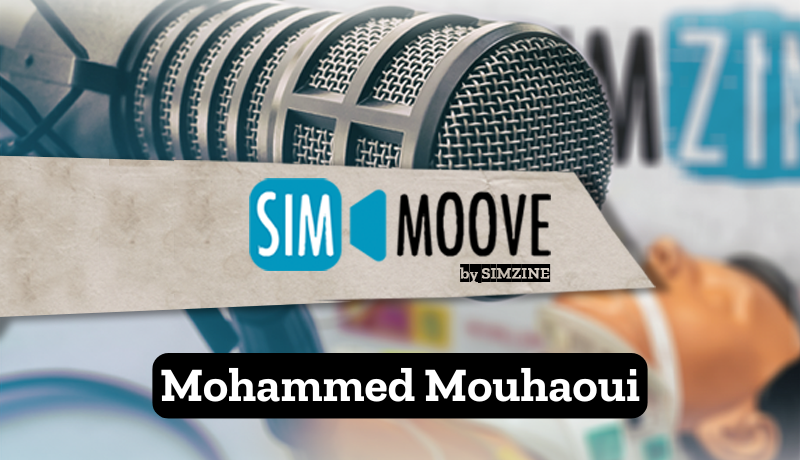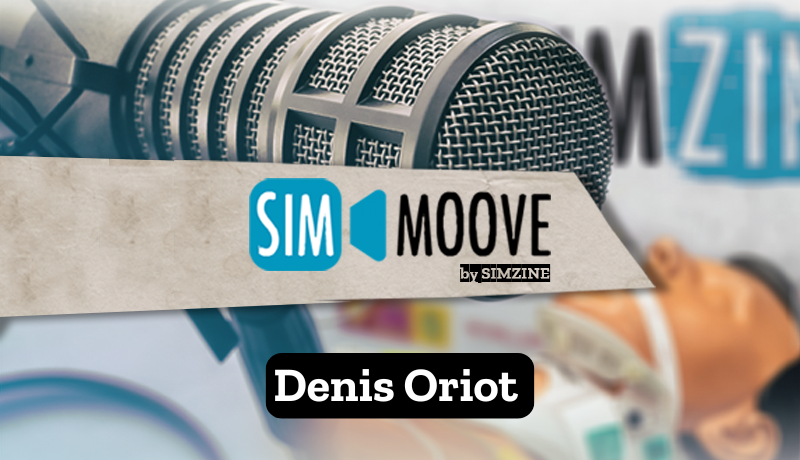Recorded live at the Morocco SIM 2024 event, this insightful conversation explores Mouhaoui’s journey from a young anesthesiologist to becoming a pioneer of simulation-based medical education in the region. He shares his challenges, triumphs, and the role of international collaboration in developing Morocco’s healthcare simulation landscape, offering a compelling look at how simulation is transforming medical training across Francophone Africa.
A SIMZINE exclusive based on SIM Moove podcast interview with Prof. Mohammed Mouhaoui
In this episode of SIM Moove, SIMZINE’s French-language healthcare simulation podcast, host Fouad Marhar sits down with Professor Mohammed Mouhaoui at the 2024 HTIC conference in Morocco. Their conversation reveals the journey of a physician who accidentally fell in love with simulation and went on to revolutionize healthcare education in Morocco, creating a unique model that combines technical excellence with cultural transformation.
Introducing Professor Mouhaoui: A Leader in Moroccan Simulation
As an anesthesiologist and head of the emergency department at Casablanca’s University Hospital, Professor Mouhaoui balances the rigors of clinical practice with his passion for teaching. Beyond his clinical work, Professor Mouhaoui is also a coordinator of university degrees in simulation pedagogy and serves as the president of Morocco SIM, the Moroccan Society for Health Simulation and Pedagogical Innovation.
His love story with simulation begins in 2007 when Professor Mouhaoui, then a young assistant professor, was asked to deliver a lecture in Granada, Spain. What seemed like a routine academic assignment turned into a life-changing experience when he visited the CIMA simulation center. “It was love at first sight,” he recalls with evident enthusiasm. Watching what appeared to be a real surgery through a glass ceiling, only to discover it was a simulation, sparked something in him. “I thought to myself, this is what we need. We have to do things that are so real before moving on to real patients.”
The Plot Twist: Equipment Before Training
In a rather unusual turn of events, Prof. Mouhaoui’s simulation journey began with an abundance of resources rather than the typical challenge of securing funding. In 2009, the Moroccan government launched a major initiative, the Plan d’Urgence (Emergency Plan), aimed at improving healthcare education. This was the perfect opportunity for Professor Mouhaoui to advocate for the development of a simulation center in Casablanca. His proposal was met with skepticism—after all, very few people in Morocco at the time even knew what simulation was. Yet, against all odds, his project was ranked first among 50 national submissions, securing funding to purchase an extensive amount of simulation equipment. “That was the bad news,” he jokes, explaining how he suddenly found himself with state-of-the-art simulation equipment but no trained personnel to operate it.
This reversed sequence led him to seek proper training, eventually connecting with François Lecomte in Paris. “I had to go back and forth to Paris. We really were in the second year, and I learned a lot from François,” he remembers. This experience taught him and other Moroccan institutions a valuable lesson: start with training the human resources, then acquire the equipment.
Building a Simulation Community
Professor Mouhaoui’s vision extended beyond mere technical implementation. As the president of Morocco SIM (Moroccan Society for Health Simulation and Educational Innovation), he has worked tirelessly to break down professional barriers. “There was this great segregation between the medical profession and the nursing profession. We never learned to work together,” he reflects. Through simulation training, he has helped foster interprofessional collaboration, inspired by the teachings of his simulation mentor, David Gaba, whom he had only met via Zoom until recently.
Mouhaoui’s reflections on mentorship served as a reminder of the interconnectedness of the global simulation community. Despite the challenges of bringing simulation to a developing healthcare system, international collaboration and shared expertise have made it possible for Morocco to achieve impressive strides in a relatively short period.
The Evolution of Medical Education in Morocco
One of the major hurdles Prof. Mouhaoui faced early on was the lack of trained faculty in simulation. While the equipment had arrived, there were no established programs or trainers. Mouhaoui took it upon himself to create a simulation training curriculum, and soon enough, other faculties across Morocco began to follow suit. Learning from Casablanca’s early missteps, these institutions prioritized faculty development before acquiring expensive equipment, ensuring that educators were prepared to utilize simulation effectively.
The transformation of medical education in Morocco under Mouhaoui’s leadership has been remarkable. Initially establishing a university diploma in simulation teaching in 2018, he expected perhaps ten enrollments in the first cohort. Instead, 36 people signed up, with a third being nurses rather than doctors. This unexpected success led to a strategic shift in 2019, when the program was rebranded from “medical simulation” to “health simulation,” emphasizing its interprofessional nature.
Today, the program maintains a deliberate balance: one-third doctors, one-third nurses, and one-third engineers, reflecting a truly collaborative approach to healthcare education. This structural change has helped break down traditional hierarchical barriers and created a more inclusive learning environment.
HTIC: A Conference Born from Resilience
The story of HTIC (Healthcare Training Innovation Conference) is a testament to perseverance. Initially planned for February 2020, the conference faced multiple postponements due to COVID-19. When it finally happened in 2022, it was organized with just 17 days’ notice following the lifting of lockdown restrictions. “We had zero dirhams,” Mouhaoui recalls with a laugh, “but we found partners who believed in us.” Despite being a relatively young event, HTIC has quickly gained a reputation for its high-quality content and innovative approach. The congress brings together healthcare professionals, educators, engineers, and students, creating a unique platform for knowledge exchange and collaboration.
What sets HTIC apart is its unique approach to including students. The conference features dedicated tracks for both researchers and students, with medical students serving as volunteers and active participants. This integration reflects Mouhaoui’s broader educational philosophy, exemplified by his weekly virtual teaching sessions through the Pygmalion program, which has been running for twelve years and regularly attracts 500-600 students from across the French-speaking world.
The Pygmalion Effect: Virtual Learning at Scale
The Pygmalion program represents another innovative aspect of Morocco’s healthcare training revolution. Every Thursday, hundreds of medical students from across the French-speaking world gather virtually for teaching sessions with Professor Mouhaoui. This voluntary program has demonstrated remarkable results: a comparative study showed significant differences in career outcomes between participants and non-participants.
“It’s not just about teaching differently,” Mouhaoui explains, “it’s about reaching students where they are. Don’t blame our students because it’s easy to say they’re skipping class or not coming to the lecture hall. Yes, it’s a new generation, but propose to them differently, that’s all.”
Breaking Hierarchical Barriers
One of Professor Mouhaoui’s most significant achievements has been challenging traditional hierarchical structures in medical education. “Just because you’re sitting at the same table with a student doesn’t mean they’re going to disrespect you,” he emphasizes. This approach has proven successful – a study comparing the career trajectories of students who participated in the Pygmalion program with those who didn’t showed “enormous differences.”
His advice to newcomers in simulation is refreshingly simple: “Put your heart into it, and it will work very well.” This philosophy has helped spread what he playfully calls the “simulation virus” throughout Morocco’s healthcare education system. “We’re in the pandemic phase in Morocco,” he jokes, referring to the growing enthusiasm for simulation-based education.
What the Future Holds for Simulation in Morocco
Under Professor Mouhaoui’s leadership, healthcare simulation in Morocco has evolved from a novel concept to an integral part of medical education. The success of HTIC and the growing community of simulation enthusiasts suggests that this evolution will continue. By combining technical expertise with a human-centered approach to education, he has created a model that could inspire similar developments across the French-speaking world.
As the interview concludes, it’s clear that Professor Mouhaoui’s impact extends beyond the technical aspects of simulation. He has helped create a more collaborative, inclusive approach to healthcare education – one that promises to shape the next generation of healthcare professionals in Morocco and beyond. His journey from that first encounter with simulation in Granada to leading a national movement demonstrates how passion, persistence, and a commitment to breaking down traditional barriers can transform medical education.
Full conversation available in French on SIM Moove
READ ALSO






































